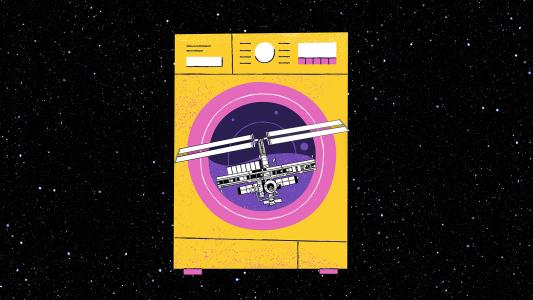A new brain tumor treatment appeared to shrink a man’s aggressive glioblastoma tumor by nearly a third — and all he had to do was wear a noninvasive helmet at home.
The challenge: Glioblastoma is a rare but aggressive type of brain cancer that is almost always fatal in adults — 75% of patients die within a year of diagnosis, and only 5% live more than five years.
Treatment usually starts with risky surgery to remove the bulk of the brain tumor, after which a patient might undergo chemo or radiation therapy.
“Our results…open a new world of non-invasive and nontoxic therapy for brain cancer.”
David S. Baskin
Not only can the side effects of those treatments hurt a patient’s quality of life, but the treatments themselves can’t actually cure the brain cancer — they just buy the patient a little more time.
Why it matters: Survival rates for glioblastoma have remained mostly stagnant over the past few decades, meaning our ability to treat the deadly brain cancer isn’t getting much better.
If that doesn’t change, we’ll continue to lose about 200,000 people to the disease every year, worldwide.
New brain tumor treatment: In a past study, researchers at Houston Methodist Neurological Institute found they could kill glioblastoma cells in the lab by subjecting them to oscillating magnetic fields, which they created by using electricity to rotate magnets in a precise way.
They believe the fields disrupt the transportation of electrons during the process used to create energy for cells. However, compounds produced by tumor cells are needed to trigger this disruption, meaning healthy cells should be spared while glioblastoma cells die.
The case study: In 2019, the researchers received approval under the FDA’s compassionate use protocol to test the therapy on a man whose brain tumor wasn’t responding to aggressive cancer treatments.
“Imagine treating brain cancer without radiation therapy or chemotherapy.”
David S. Baskin
Over the course of three days, they trained the man and his wife how to deliver the therapy using a helmet equipped with three rotating magnets.
They then sent him home with the helmet and instructions to administer the brain tumor treatment for two hours every day at first and then work his way up to six hours.
The results: The man used the helmet for 36 days before suffering an unrelated head injury that led to his death. His family gave the researchers permission to autopsy his brain, and they found that his tumor had shrunk by 31% since the start of study.
“Thanks to the courage of this patient and his family, we were able to test and verify the potential effectiveness of the first noninvasive therapy for glioblastoma in the world,” corresponding author David S. Baskin said in a press release.
Looking ahead: While this study is encouraging, the researchers will need to prove their brain tumor treatment can help more than a single patient.
The unlucky head injury also means we don’t know if shrinking the tumor in the short-run improves survival rates. But if it can, the helmet could mark a turning point in the battle against glioblastoma.
“Imagine treating brain cancer without radiation therapy or chemotherapy,” Baskin said. “Our results in the laboratory and with this patient open a new world of non-invasive and nontoxic therapy for brain cancer, with many exciting possibilities for the future.”
We’d love to hear from you! If you have a comment about this article or if you have a tip for a future Freethink story, please email us at tips@freethink.com.
